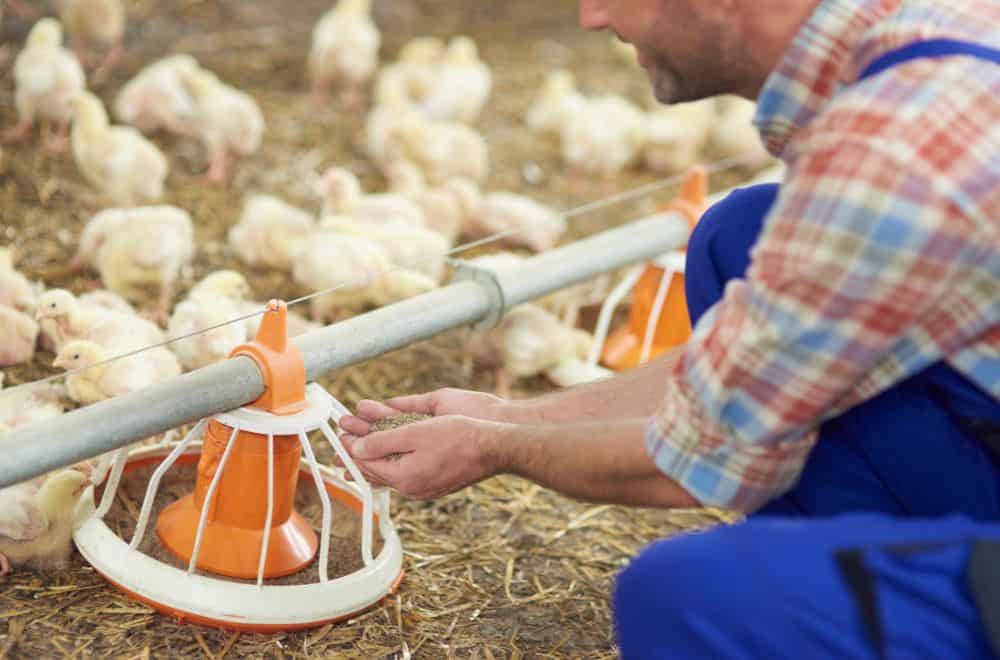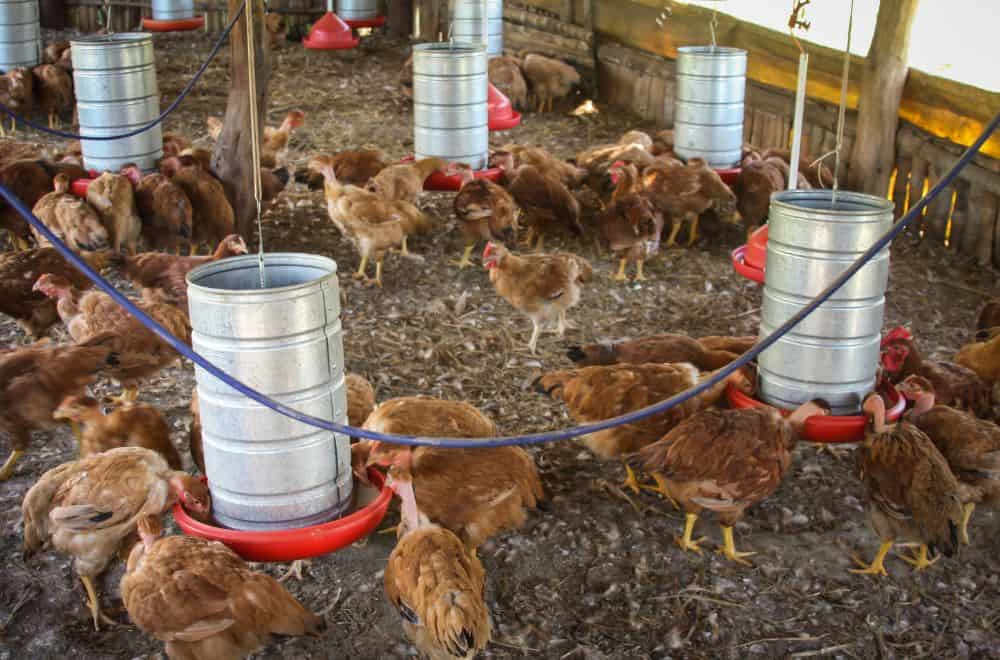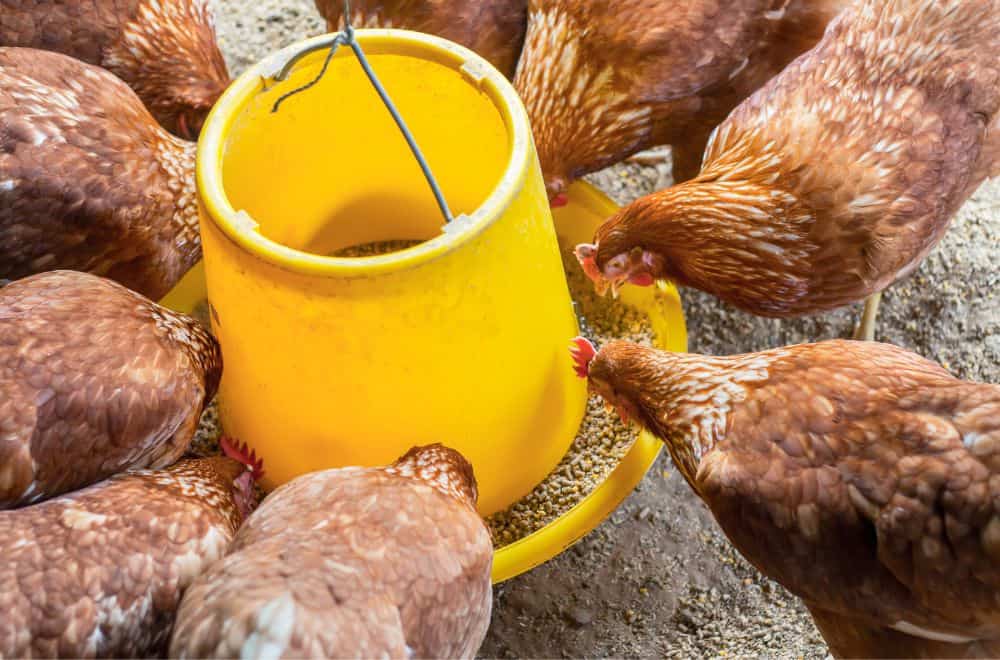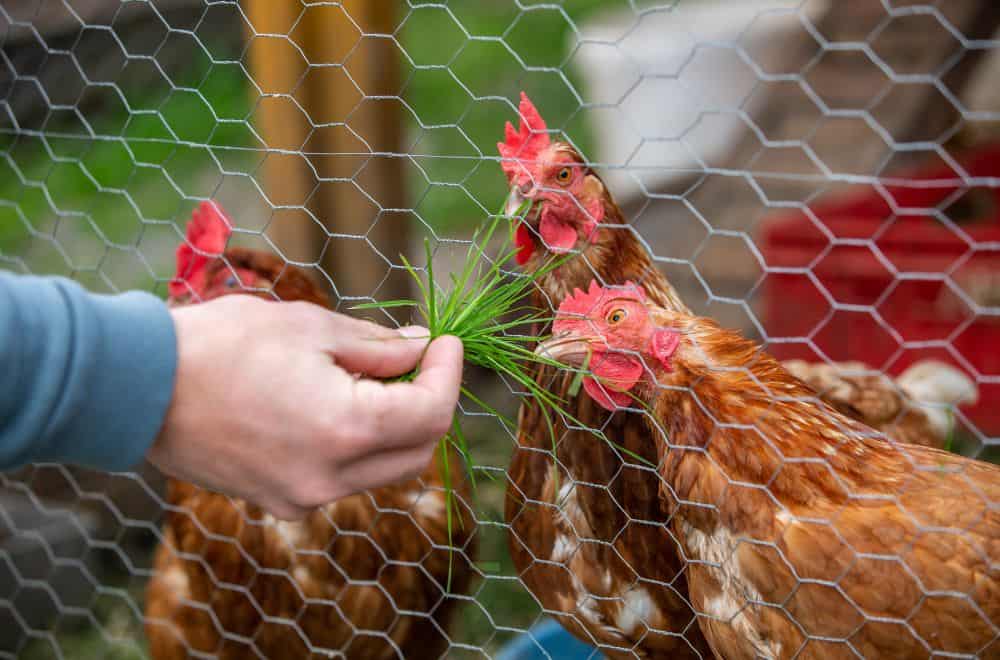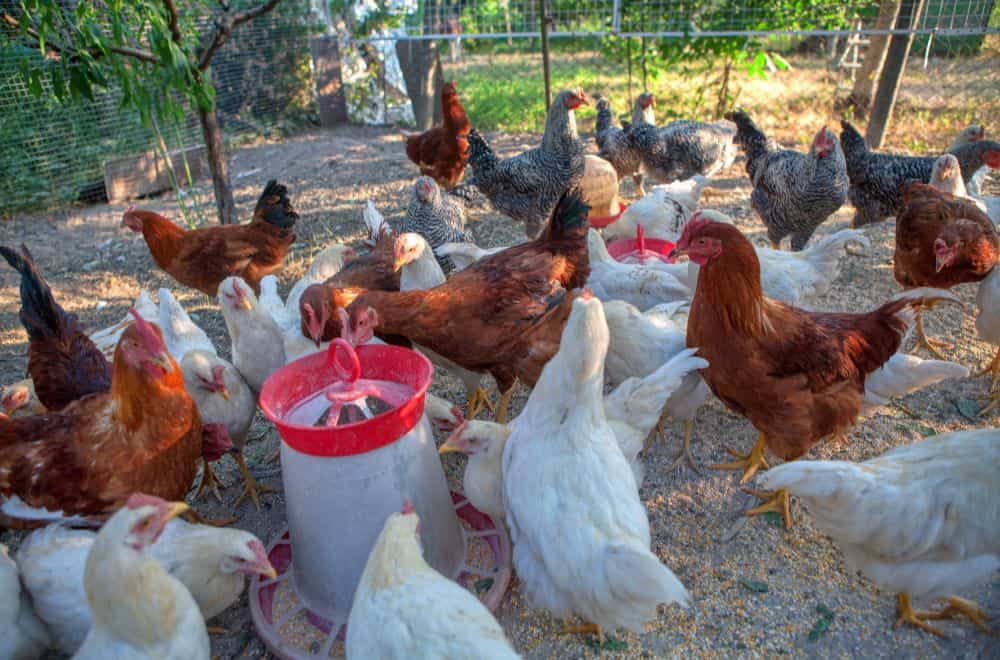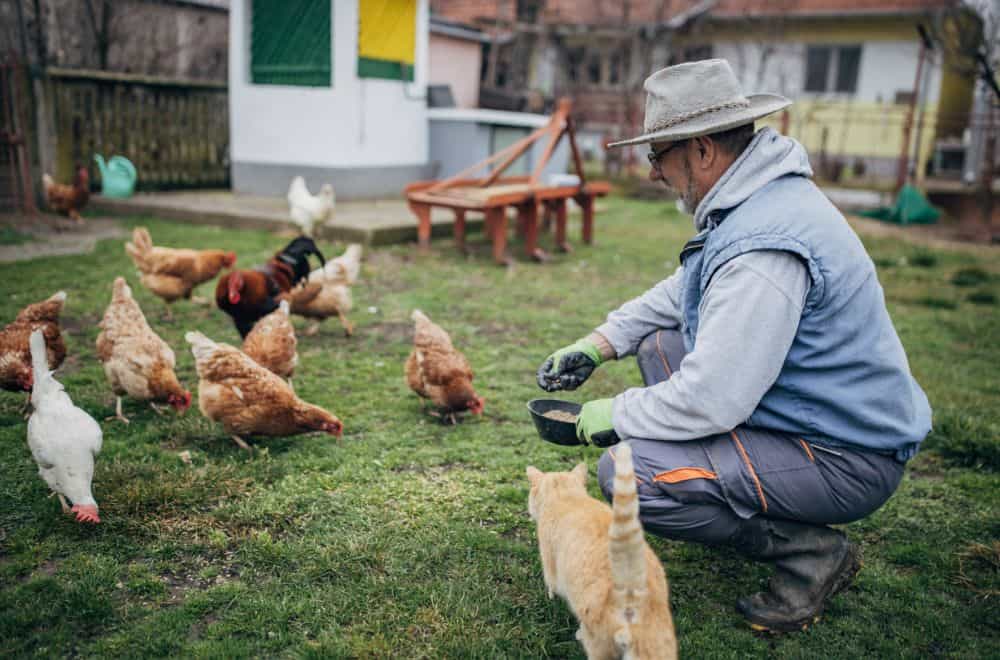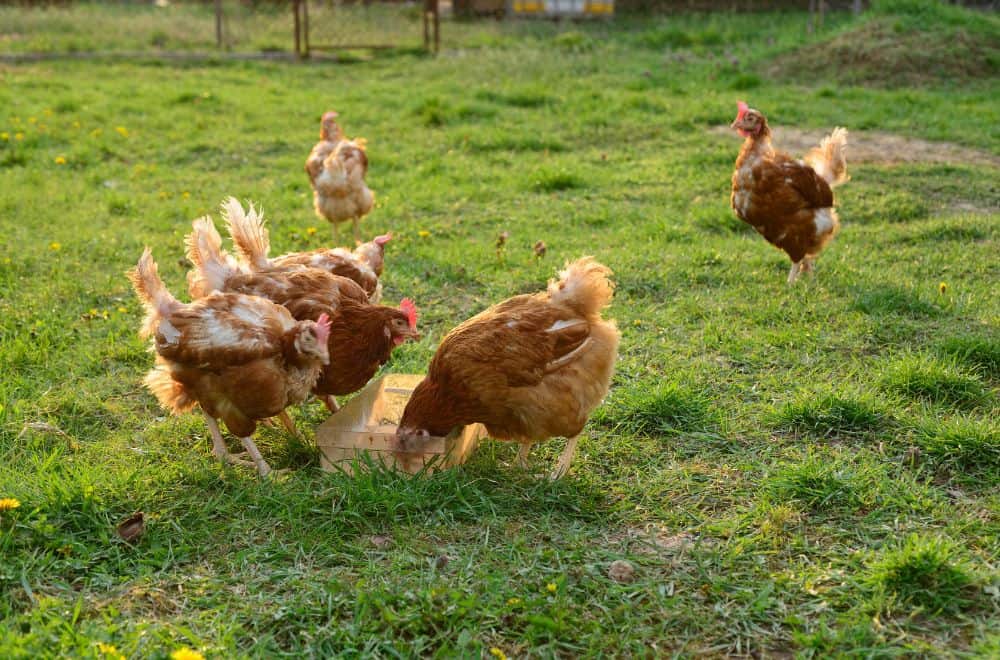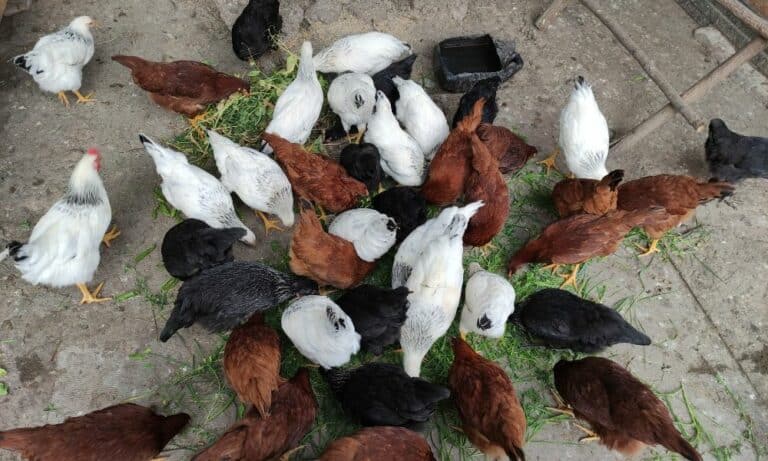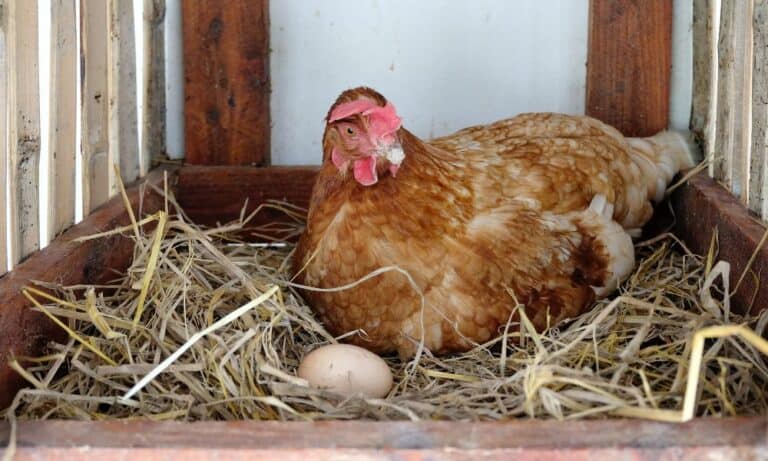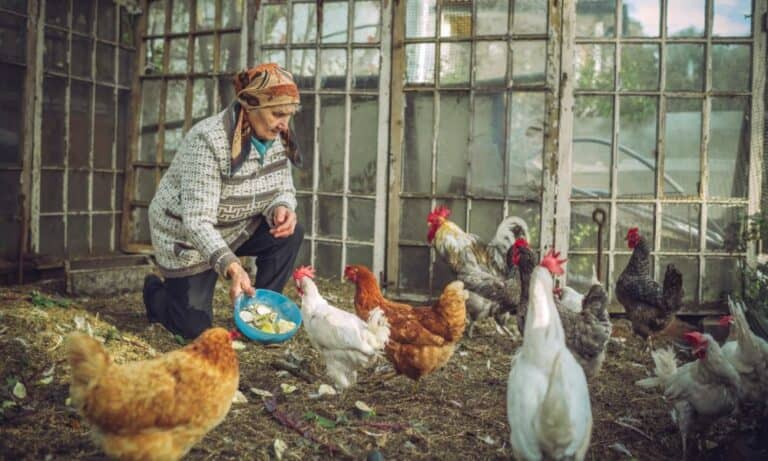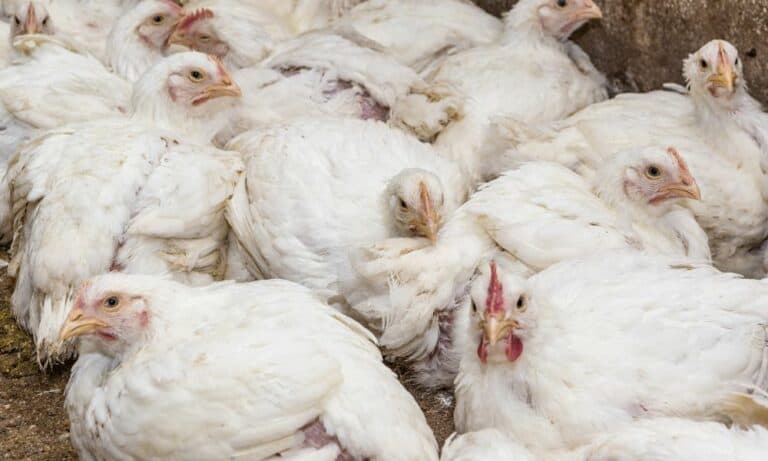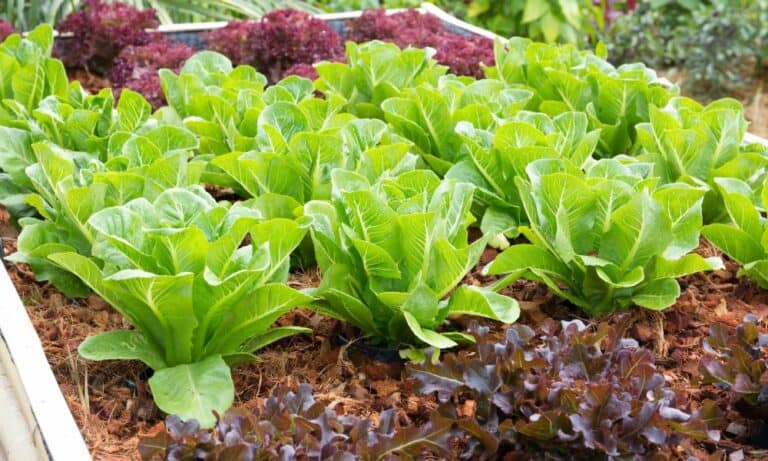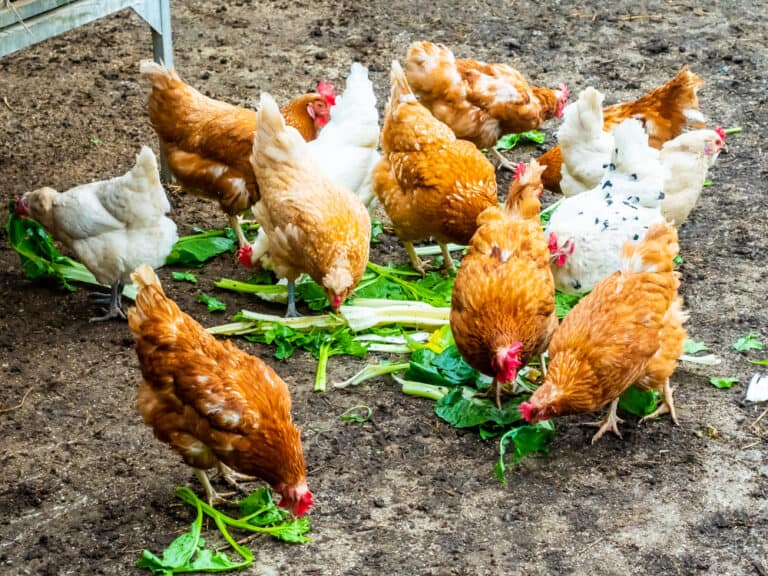Keeping chickens in your urban or traditional farm is an excellent way to produce healthy eggs and meat and provide natural pest control. Besides pecking throughout the free space, they often need extra food to fulfill all needs in necessary nutrition.
On the other hand, poultry kept indoors entirely depends on the feed you provide. In both cases, you should know how often do you feed chickens and what ingredients are the best for them. Remember that chickens can survive without food for approximately 4 to 5 days. Most will become malnourished after that moment.
How Often Do You Feed Chickens?
Even though your chickens will tolerate feeding once a day, offering them food in the morning and afternoon is a better option. Two servings daily will prevent a too-long period of starvation and positively affect their digestive tract.
When living on a farm and can feed your poultry 3 to 4 times a day, you should do it. Small but frequent feedings will keep them busy and satisfying since chickens prefer such a meal schedule.
Another option is to install a chicken feeder and provide constant access to the pellets. You can also toss scraps and treats on the ground and let them enjoy searching for food.
Be sure to make a reasonable estimate of the food amount your chickens need per day. Otherwise, you will waste food, lose money, and end up with rotting leftovers that may attract pests, including mice, rats, and possums.
The feeding schedule also depends on the chicken’s age. The reason is the way their digestive tract functions, the metabolism rate, and the need for nutrients during growth.
Growing chicks
It is crucial to feed your growing chicks every 30 minutes in the very beginning and prolong that period to max 2 hours, depending on their age. Remember that immature birds have no other activities except eating, drinking, and sleeping, so this schedule doesn’t affect their daily activities.
Food is crucial for such small birds since they never use all digested feed efficiently but spend it for heat production.
This extra heat (metabolism heat) reaches a peak approximately 4 to 6 hours after feeding. Therefore, you should offer food to your chicks at 6 or 7 AM when living in a warm climate.
It is not an ideal option if you like sleeping early in the morning and can’t supervise their feeding. In such a case, it is impossible to be sure whether all birds have free access to the feed.
Another problem is possible choking in older chicks when they haven’t free access to water at least one hour before feeding. You can effortlessly solve this problem by:
- Feeding chicks before the temperature reaches its daily peak
- Offering food during the period when you can monitor the process
- Switching on drinkers at least an hour before feeding
Additionally, feeding growing chicks when the outside temperatures are the highest can endanger their health. Therefore, feeding them in the late afternoon is a better option.
Adult breeders
Be aware that the adult chickens’ feeding time significantly affects several things, such as:
- Egg production
- Eggshell quality
- Fertility
- Hatching percentage
For instance, hens require feeding every 2 to 6 hours, depending on the following:
- Their age, size, and breed
- Feed texture
- Diet energy level
- Environmental temperature
Extended feeding time is a better option during hot summer days. It ensures a more even food distribution, so even the shyest chickens have enough time to eat.
When you offer food early in the morning, your poultry will finish the most intense feeding activity by 9 AM and reduce the heat load in the afternoon. Additionally, hens have plenty of time for nesting activities by noon.
On the other hand, feeding hens in the late afternoon improve eggshell thickness. The reason is calcium ingestion at the moment of shell calcification beginning. You can provide a scratch feed, like oyster shell or limestone, if your hens lay eggs with weak and thin shells.
The downside of this option is:
- Belted eggs with a distinct thickened shell band around the middle
- Potential mating activity reduction
- Increased aggression in roosters
Belted eggs occur when the eggshell breaks inside the hen’s uterus but is imperfectly repaired before laying. Since such eggs have low air and moisture transfer possibilities, using them for chick hatchlings is impossible.
Is Feeding the Chickens Daily Mandatory?
Daily feeding is necessary for getting healthy and prosperous chickens. Additionally, you can expect to get eggs only when hens have the required nutrients available on a daily basis.
You can use a simple method to determine whether you feed your chickens appropriately. Healthy hens lay 5 to 6 eggs weekly, while every reduction indicates a feeding or health issue.
Feed amount for chickens per day |
|
| Age | Amount of feed |
| One week | 0.40 to 0.55 ounces (11.5 – 15.6 g) |
| Two weeks | 0.55 to 0.75 ounces (15.6 – 21.3 g) |
| Three weeks | 0.75 to 1.20 ounces (21.3 – 34 g) |
| 4 to 6 weeks | 1.20 to 1.70 ounces (34 – 48 g) |
| 7 to 8 weeks | 1.90 to 2.10 ounces (54 – 59.5 g) |
| 4 to 7 months | 2.50 to 2.80 ounces (71 – 79.5 g) |
| Hens | 0.25 pounds (115 g) |
Be aware that one adult chicken needs at least 0.25 pounds (115 g) or approximately half a cup of nutrient-rich feed daily. Buying a hopper feeder is an excellent way to prevent most of these problems.
This device keeps food available in constant amounts, allowing all chickens to reach it when needed. It will also solve the problem of belted eggs in hens and make chicken feeding more effortless.
What to Feed Chickens?
Feeding chickens is not a complicated process. They are rarely picky eaters and consume whatever you offer them. Therefore, it is on you to provide a balanced diet and allow their healthy growth and regular egg laying.
1. Commercial feed
This food type provides necessary nutrients, like:
- Protein and amino acids
- Enzymes
- Vitamins
- Minerals and trace elements
Remember that the commercial feed type depends on the chicken’s age. So, you can recognize several varieties, such as:
- Starter or chick feed
- Grower or pullet feed
- Layer chicken feed
- Pellets
2. Chicken scratch
Even though chicken scratches are not fully nutritious food but treats, they can keep your poultry entertained while looking for something to nibble. Take care not to overdo it to prevent overweighing.
3. Grass and weeds
Chickens like eating Kentucky bluegrass and clover, and you can also offer them weeds with broad foliage, like dandelions.
4. Insects
Chickens love catching and consuming bugs, effectively controlling the tick population. They also enjoy looking for mealworms, earthworms, crickets, and beetles. Eating them supplements their regular daily diet.
5. Seeds and grains
Offer your chickens various seeds and grains for valuable ingredients. The win-win combination is to offer a moderate amount of:
- Pumpkin seeds
- Oatmeal and oats
- Cooked rice
6. Corn
Poultry adores corn, so you can use it to feed and tame your chickens. Be careful with offered amounts since it is high in fat. The best option is to consider corn a treat and provide only a handful of grains per hen.
7. Oyster shells or eggshells
Providing oyster shells raises calcium levels, making them crucial for laying hens. The excellent and more affordable alternative is offering chicken eggshells. Both options are helpful when noticing your hens lay eggs with thin shells. Never mix this ingredient with regular food to prevent a too-high calcium intake.
8. Grit
Grit improves food digestion in chickens. It makes grinding food in the gizzard more efficient and ingredients prepared to digest.
9. Table scraps
Offering table scraps to chickens is controversial and even forbidden in some countries. However, some leftovers are healthy, like whole grains, fruits, and veggie leftovers. For instance, your chickens will benefit from treats like:
Vegetables
Fruits
Leftovers
On the other hand, you should avoid offering:
- Beans
- Avocado
- Raw potatoes
- Eggplant
- Ginger
- Rhubarb
- Onions
- Pickles
- Peanuts
- Processed junk foods
- Candy and chocolate
Even though your chickens enjoy a yummy pizza and pasta, you should avoid offering such food. Also, you should never feed your poultry with highly processed food and leftovers containing high salt, sugar, or spices levels.
Be aware that some ingredients, like tomato plant leaves, raw potatoes, and citrus, can be toxic for chickens. Additionally, never offer rotten and moldy food to prevent health issues.
10. Supplements
Sometimes adding supplements to regular feed is an excellent way to complete chickens’ daily meals. It is particularly vital when poultry can’t fully absorb and use offered nutrients. Besides calcium sources, your chickens may need additional apple cider vinegar, electrolytes, and powdered probiotics.
11. Water
Chickens need clean water at least twice a day, but providing free access throughout the day is better. Healthy chickens can withstand 8 to 48 hours without it, depending on their age and weather conditions. Remember that only plenty of water can prevent dehydration, health issues, and stress.
Summary
You should offer feed to your chickens at least once daily, but a better option is establishing a daily feeding routine. You should also provide constant water access and never forget to feed your poultry regularly. Be aware that chickens can stand only 4 to 5 days without food before becoming malnourished.

